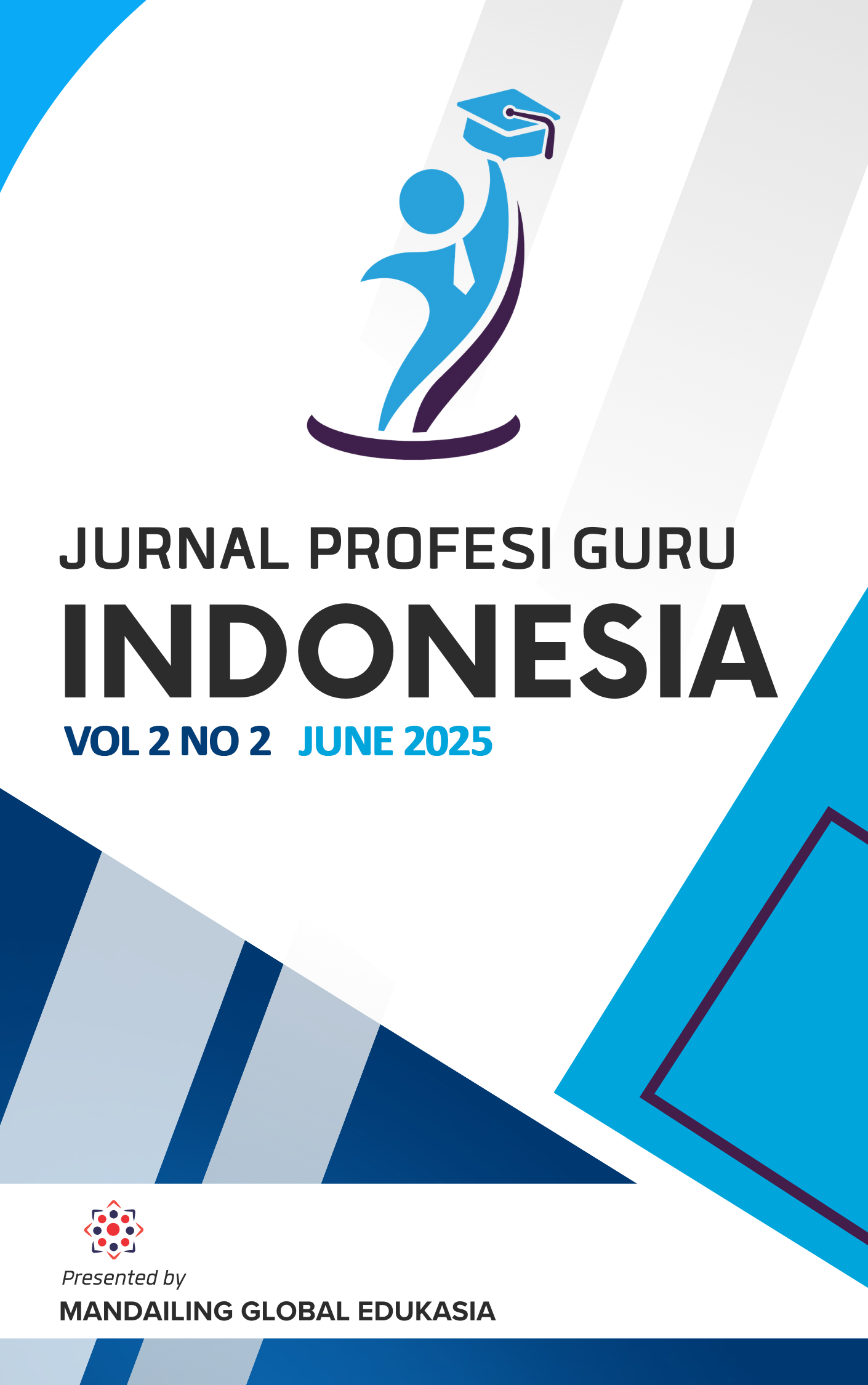Realistic Mathematics Education Approach with the Assistance of Augmented Reality Media to Improve Elementary School Students' Mathematics Learning Outcomes
DOI:
https://doi.org/10.62945/jpgi.v2i2.746Keywords:
Realistic mathematics education, augmented reality, learning media, mathematicsAbstract
Mathematics is a subject that every student must master. However, mathematics remains a traumatic experience for most students. This impacts students' low mathematics learning outcomes. This study aims to improve elementary school students' mathematics learning outcomes using a realistic mathematics education approach assisted by augmented reality media. This study is a classroom action research consisting of three cycles. Each cycle goes through four stages of activity: planning, action, observation, and reflection. The subjects of this study were fourth-grade students of SD Negeri 69 Banda Aceh. Data for this study were collected using observation and test techniques. Observations were used to measure teacher and student learning activities, while tests were used to measure improvements in students' mathematics learning outcomes. The results of the study indicate that the realistic mathematics education approach assisted by augmented reality media can improve elementary school students' mathematics learning outcomes. This can be seen in the average scores on the test results which show an increase in each cycle, namely 44.57 (pre-cycle), 63.07 (first cycle), 75.66 (second cycle), and 87.35 (third cycle). Based on this, the realistic mathematics education approach assisted by augmented reality media can be used as an alternative to solve the problem of low mathematics learning outcomes of students in elementary schools.
Downloads
References
Alhumaidan, H., Looi, C. K., & Shukor, N. A. (2021). Teachers’ professional development for integrating augmented reality into science teaching: A systematic review. Education and Information Technologies, 26(6), 7335–7361. https://doi.org/10.1007/s10639-021-10599-w
Cheng, K.-H., & Tsai, C.-C. (2019). A case study of immersive augmented reality learning design based on interactive storytelling and problem-solving. Interactive Learning Environments, 27(8), 1071–1086. https://doi.org/10.1080/10494820.2018.1495651
Gravemeijer, K., & Doorman, M. (2018). Context problems in realistic mathematics education: A calculus course as an example. Educational Studies in Mathematics, 27(3), 405–421. https://doi.org/10.1023/A:1003022731402
Hwang, G.-J., & Lai, C.-L. (2017). Facilitating and bridging out-of-class and in-class learning: An interactive e-book-based flipped learning approach for math courses. Educational Technology & Society, 20(1), 184–197. https://www.jstor.org/stable/90002180
Ibáñez, M. B., & Delgado-Kloos, C. (2018). Augmented reality for STEM learning: A systematic review. Computers & Education, 123, 109–123. https://doi.org/10.1016/j.compedu.2018.05.002
Kurniawan, H., Surya, E., & Syahputra, E. (2020). The effectiveness of realistic mathematics education approach in improving students’ mathematical problem-solving ability. American Journal of Educational Research, 8(9), 640–645. https://doi.org/10.12691/education-8-9-2
Lin, Y.-L., Chiu, P.-S., & Lai, C.-H. (2020). The impact of an AR-based learning environment on students’ conceptions and problem-solving performance in mathematics. Interactive Learning Environments, 30(1), 1–15. https://doi.org/10.1080/10494820.2020.1799033
Puspitasari, D., Huda, N., & Nurtanto, M. (2021). Enhancing teacher digital competence through sustainable professional development in 21st-century education. International Journal of Instruction, 14(2), 325–342. https://doi.org/10.29333/iji.2021.14219a
Rahmawati, Y., Ridwan, A., & Suryani, L. (2022). The role of students’ positive emotions in developing mathematics achievement through technology integration. Journal of Educational Science and Technology, 8(1), 1–9. https://doi.org/10.26858/est.v8i1.28973
Roschelle, J., Martin, W., Ahn, J., & Schank, P. (2017). Networked learning for STEM teachers and students. Educational Technology, 57(2), 38–46. https://www.jstor.org/stable/44430331
Sari, A. K., & Rosnawati, R. (2018). The relationship between students’ motivation and mathematics achievement. Journal of Physics: Conference Series, 1097, 012112. https://doi.org/10.1088/1742-6596/1097/1/012112
Voogt, J., Erstad, O., Dede, C., & Mishra, P. (2015). Challenges to learning and schooling in the digital networked world of the 21st century. Journal of Computer Assisted Learning, 31(5), 502–512. https://doi.org/10.1111/jcal.12138
Wijaya, A. (2016). The relationships between Indonesian fourth graders’ difficulties in fractions and the opportunity to learn fractions: A snapshot of TIMSS results. International Journal of Instruction, 9(2), 151–164. https://doi.org/10.12973/iji.2016.9212a
Downloads
Published
How to Cite
Issue
Section
License

This work is licensed under a Creative Commons Attribution-ShareAlike 4.0 International License.









